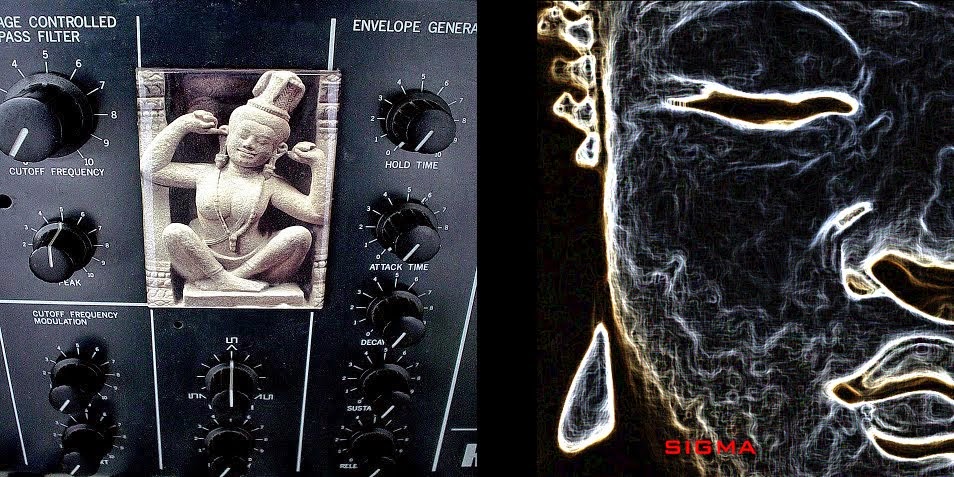Alignment steps are documented in Prodigy's Technical Service Manual. When doing the temperature adjustment of OSC1 and OSC2 I found David Morrins instructions very valuable. When adjusting the temperature trimmer I always checked that the voltage at pin 7 of U2/U4 was negative. If this voltage jumps to positive voltage then the heater circuit is saturated and will not track temperature. If this happens turn the R14/R35 trimmer to other direction so that you get the pin 7 back to negative region.
Original Prodigy's OSC1 is tuned lower (32-16-8) than OSC2 (16-8-4). This is not necessary if you are using the external keyboard-input that doesn't have the 2.5 octave limitation of Prodigy's keyboard. I tuned the OSC2 similarly to OSC1.
sunnuntai 29. toukokuuta 2016
lauantai 28. toukokuuta 2016
Moog Prodigy BOM
Here is an Excel-list for the Mouser-parts needed to build my Eurorack Moog Prodigy
Missing from this list are the 24mm potentiometers and the DP3T/DPDT switches. Also Mouser can not source the CA3046/LM3046 and CA3080 chips. You can try BanzaiMusic for these.
Here is a picture of the 24mm 1M-log Alpha-pot I used for R155,R158,R166 and R169. Shaft length is 15mm and the diameter is 6.3mm. The other potis are similar size and look but from CTS (R83/3M-log, R106/3M-log and R136/50k REV-LOG). I sourced these potentiometers and switches from Uraltone and BanzaiMusic
Missing from this list are the 24mm potentiometers and the DP3T/DPDT switches. Also Mouser can not source the CA3046/LM3046 and CA3080 chips. You can try BanzaiMusic for these.
Here is a picture of the 24mm 1M-log Alpha-pot I used for R155,R158,R166 and R169. Shaft length is 15mm and the diameter is 6.3mm. The other potis are similar size and look but from CTS (R83/3M-log, R106/3M-log and R136/50k REV-LOG). I sourced these potentiometers and switches from Uraltone and BanzaiMusic
maanantai 23. toukokuuta 2016
Prodigy PCB 4.4E building details
 |
| Other end of resistors R59 and R41 must be connected directly to +12V. |
 |
| C8 must be a high quality polystyrene or polyester film type. |
 |
| C14 must be as the C8. |
 |
| Here is one jumper that is needed. |
 |
| Jumpers J1 and J2 are also installed. Here you can also see the optional headers at pin 5 of U2B and across R17. These headers make the temperature alignment procedure easier. |
 |
| Here you can also see two jumpers and the ferrite cable cores in power-input. |
 |
| Boards 1 and 2 are connected with direct cables. Note that these are not tight so that the alignment to front panel is easier. |
 |
| Here you can see the alignment headers for OSC2 temp adjustment. |
 |
| RKYBD can be 200R resistor. This replaces the keyboard resistor divider. |
 |
| Here is the input connector for 20k resistor and the output of U13A to make the VCA adjustment easier. |
 |
| The TE Headers are soldered to the bottom side (Wheels and PWM-inputs). |
 |
| I used only the potentiometers from Doepfers Wheels module. |
perjantai 20. toukokuuta 2016
EWI and Moog
My Akai EWI windcontroller works great with Moog Prodigy. Here the filter is closed and drone-mode is used. EWI controls the pitch and filter cutoff. I created this with looper, reverb and delay pedals. It's amazing how much control of the sound you get with just these two control CV's.
tiistai 17. toukokuuta 2016
Moog Prodigy Sounds
This is a short sound example of my Eurorack Moog Prodigy clone that I
have designed. Here you can hear the more exotic sounds that Prodigy can
produce with PWM and OSC FM. Only a little bit of reverb is added.
keskiviikko 11. toukokuuta 2016
Moog Prodigy information
Here are some good sources of Moog Prodigy technical information:
- Dusty Schematics has a nice explanation of Prodigys keyboard circuit (Part I and II --> January/February)
- E-Music DIY Archive is a great source of Moog manuals. Here you can find the Prodigys Service Manual and also the circuit description part (prod5-prod8)
- Sequence 15 has a nice explanation of Prodigys sawtooth VCO core
- David Morrin has a great troubleshooting page of Prodigy. Here is a good explanation of Prodigys VCO-heater circuit and how to check that it is working
- Dusty Schematics has a nice explanation of Prodigys keyboard circuit (Part I and II --> January/February)
- E-Music DIY Archive is a great source of Moog manuals. Here you can find the Prodigys Service Manual and also the circuit description part (prod5-prod8)
- Sequence 15 has a nice explanation of Prodigys sawtooth VCO core
- David Morrin has a great troubleshooting page of Prodigy. Here is a good explanation of Prodigys VCO-heater circuit and how to check that it is working
maanantai 9. toukokuuta 2016
Moog Prodigy is Alive!
My Eurorack version of this legendary Moog synthesizer is now ready! Everything works as expected and the sound is genuine Moog sound. The prototype frontpanel is just a raw aluminium panel where I clued the printed panel layout. When I am 100% sure that this is how I want it then I order the final frontpanel from Schaeffer AG. Next I must make some sounds with this synth and put them on SoundCloud!
 |
| Depth of the synth is only about 20mm. |
 |
| PCB's are connected with the red cables. |
 |
| Calibration to technical specifications. |
 |
| Prodigy in my Eurorack case with modified Doepfer Wheels-module and Verbos keyboard. The two jacks in the Wheels module are the PWM-inputs for VCO1 and 2. |
Tilaa:
Blogitekstit (Atom)


